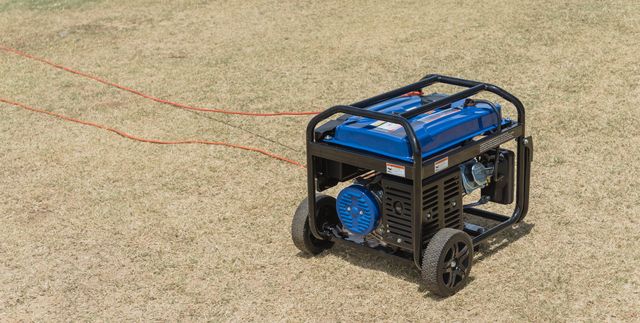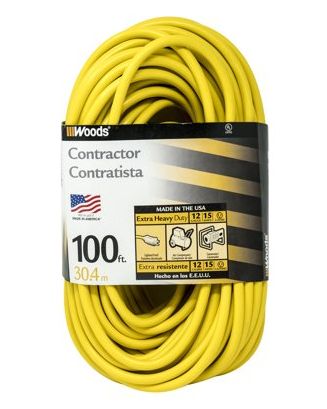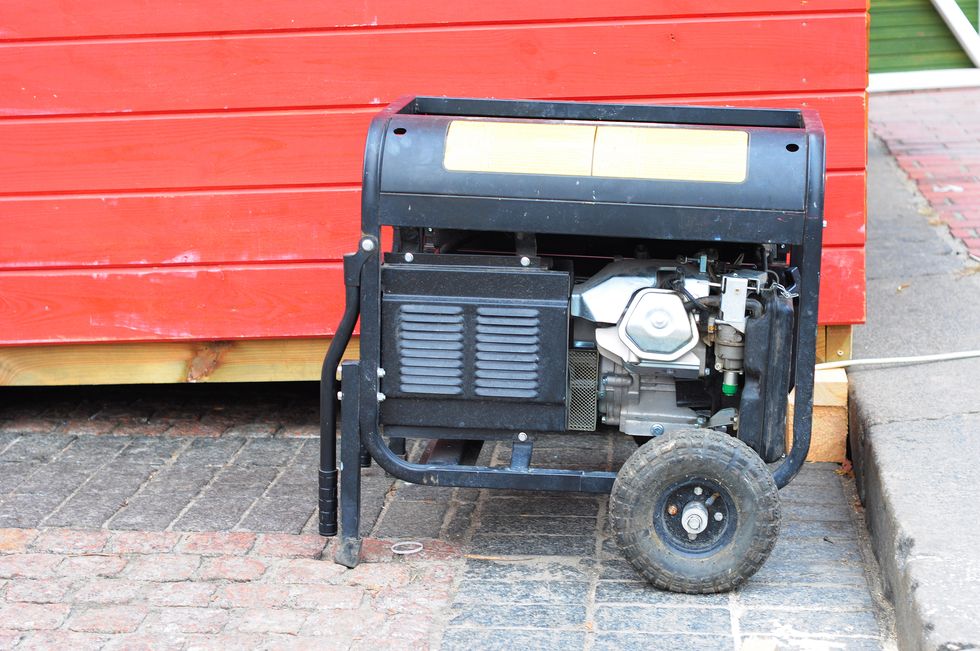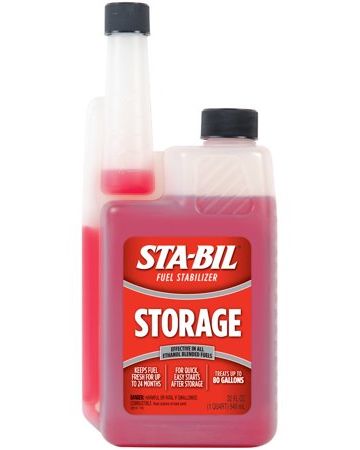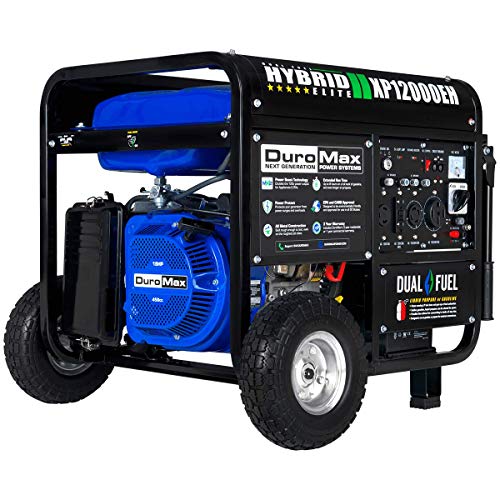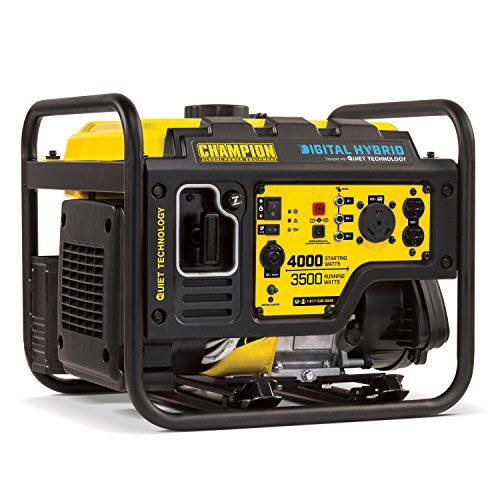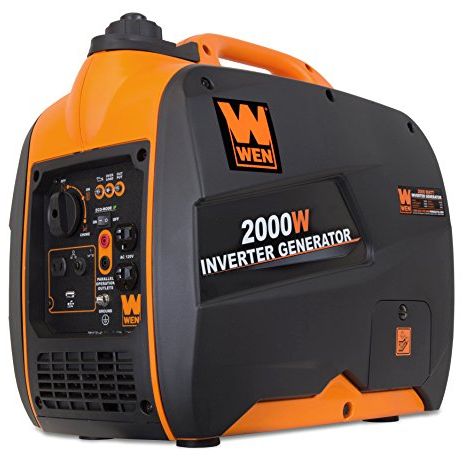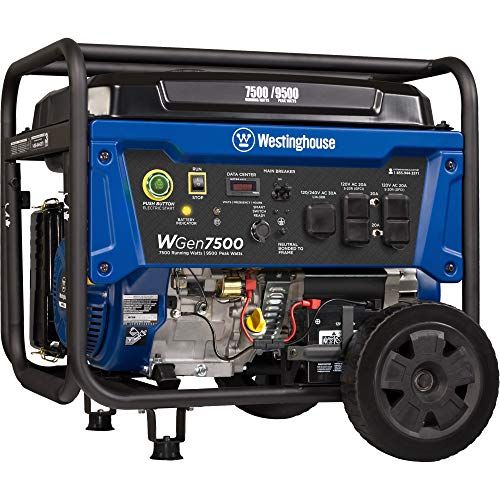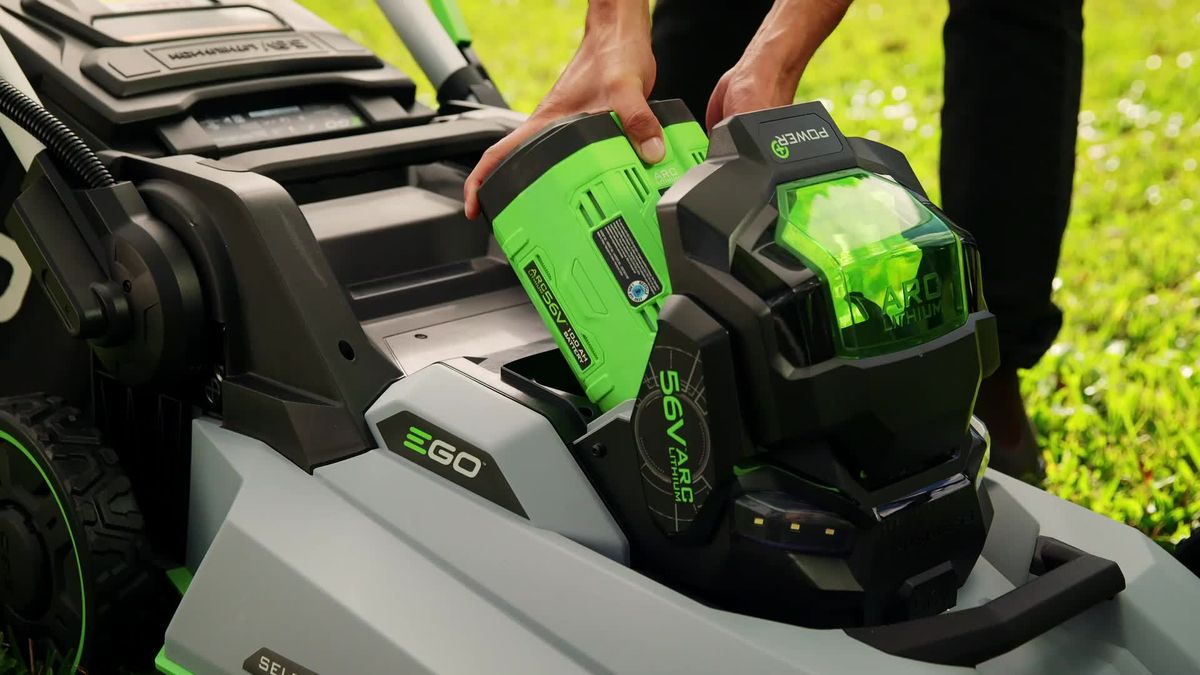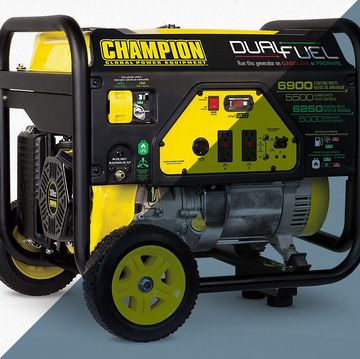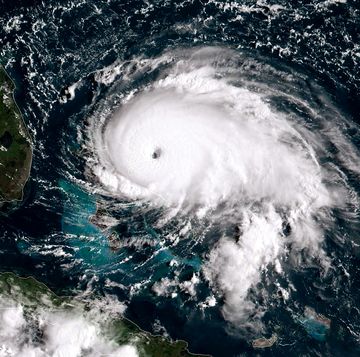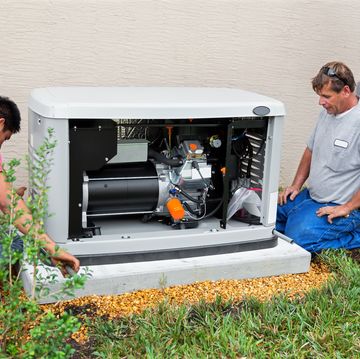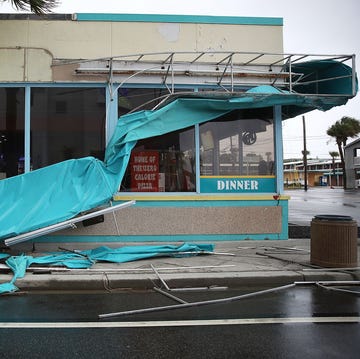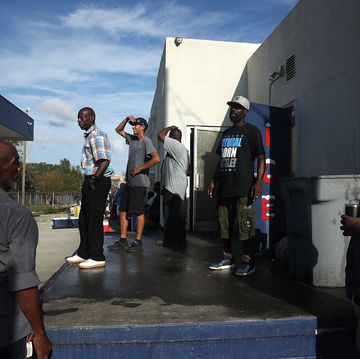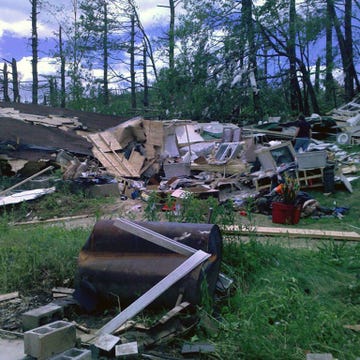A portable generator is a convenient way to safely produce your own power when the grid goes down, either due to natural or man-made causes. But how does a generator work? Whether you’re new to using a generator, or well-experienced, there are a few things you need to know to operate it safely.
🛠 You love tackling DIY projects. So do we. Let’s build something together.
“The single biggest thing you can do to run a generator safely is plan how to use your generator before you need it,” says Kevin Cole, senior associate engineer for generator manufacturer Generac. Plan what you want to power, and how you will use the generator, to power those loads.
➡️ How Does a Generator Work?
Before we dive deep into the specs and best practices for a home generator, it’s important to note that portable generators are not the same thing as home standby generators, which are machines that are permanently hooked up to your house. Home standby generators automatically kick on when the grid stops supplying power to your house, whereas a portable generator is smaller and requires more planning.
Portable generators convert mechanical energy into electrical energy, oftentimes relying on gas to kickstart the process (though you can also find diesel and propane units). Regardless, your generator has five primary parts: an internal combustion engine, an alternator, a starter, a fuel tank, and outlets.
➡️ Electrical Requirements
1) Size Matters: Size the generator correctly so that it meets the electrical loads you intend to power with some excess capacity built in. We’ve written on this topic, as have many others, so there’s no dearth of good information out there. If you undersize the generator, you produce essentially the same condition as a utility “brown out” condition with insufficient voltage. This can damage something as big as a well pump or as small as a computer.
2) Use a Transfer Switch: The safest way to use a portable generator for home power backup is to use it in conjunction with a manual transfer switch–a robust piece of electrical gear. The generator connects to the transfer switch with a thick, heavy-duty cable called a “genset cord,” which is plugged into an outlet receptacle installed on the outside of the house (that receptacle is officially known as a “power inlet box”). A cable on the inside of the house runs from the outlet to the transfer switch. Electricity from the generator runs through the genset cord, to the receptacle, through interior cable, to the transfer switch and its circuit breakers to the various circuits you need to power–safely.
The transfer switch has three purposes:
- It isolates the circuits in the house that you want to power; all other circuits are left without access to power, helping to prevent overloading.
- The transfer switch electrically isolates the generator and the house from the grid. This prevents generated power from backfeeding electricity onto the grid and sparking a fire, or injuring utility personnel who have come to do repair work and restore power.
- The switch prevents utility-supplied power from powering the house while the generator is running, which could cause an electrical fire and likely catch the generator on fire as well.
3) Use a GFCI Transfer Switch on a GFCI Generator: The National Electrical Code (NEC) requires GFCI (ground fault circuit interrupter) outlets on dual-voltage generators (those that produce 120 and 240 volts). Generators that are equipped with GFCI outlet receptacles require a transfer switch designed for them. This switch may be called a three-pole switch or simply a GFCI-compatible switch, and it is also required by the NEC. When you throw this switch, you not only separate the generator-supplied circuits from the two 120-volt circuits supplied by the utility, you also disconnect a third leg of the utility-supplied circuit, called the neutral. If you use a standard 2-pole transfer switch on a GFCI-equipped generator (which does not disconnect the neutral), the GFCI outlets will trip off. The use of this switch is an electrical code violation, and by defeating the GFCI receptacles, you’ve limited the generator’s capability. This is ironic, since you’ve paid extra money to have that GFCI protection. You can use a 3-pole switch or a 2-pole transfer switch on all other types of (non-GFCI) generators.
4) Use Heavy-Duty Cords (Correctly): Suppose you don’t have the money yet to have a transfer switch installed. You can safely operate appliances plugged directly into the generator. You can power your refrigerator, power tools, and computers (for example) by running long extension cords to the generator. These cords should be heavy-duty and of a thick enough wire gauge to handle the current flowing through them; the cord’s packaging will tell you what electrical load it’s rated to supply. Next, the cords should be rated for exterior use. Finally, you want to run cords in a manner that they won’t be damaged, kinked, or coiled up—particularly while powering a high-wattage device like a heater. Coiled extension cords can get so hot, they can melt.
There is a correct sequence to power a load through an extension cord. Start the generator, and plug the cords into it. Then go inside and plug the loads into the extension cord. Do the opposite when it’s time to disconnect the loads. Unplug the loads from the generator, then go outside and unplug the cords, and turn the generator off.
5) Understand When and How to Use a Ground Rod: Don’t connect the generator to a ground rod when you plug loads directly into the generator by extension cords. To restate that: If you plug a heavy-duty extension cord into the generator and connect that to an appliance, power tool, or device, skip the ground rod.
Conversely, use a ground rod when powering circuits via a transfer switch. Connect from the grounding lug on the generator to the ground rod with a piece of copper wire the same gauge as the heaviest wire in the circuit that you’re powering. For example, if you are using the generator to power something as large as 240-volt air conditioner, or an electric range, you may need 6- or 8-gauge ground wire.
➡️ Carbon Monoxide Safety
Like most small-engine machines, generators produce large amounts of carbon monoxide (CO). You’ve heard us say it before, but we’ll say it again: Never, under any circumstances, operate a generator in a garage, utility building, or shed (even with the door open), in the basement, or in any manner in which carbon monoxide can collect to the point where it becomes deadly.
Furthermore, point the generator’s exhaust away from the house. If it’s possible to orient the generator relative to a prevailing wind so that it’s down-wind of the house, do so. Secure the generator with a high-strength chain and padlock.
Finally, many generators are equipped with CO detectors that will shut the machine down before CO builds up to the point where it becomes deadly. Although a generator thus equipped is a little more expensive than one without the technology, it’s still a good idea.
➡️ Fuel Quality and Safety
Don’t refuel a hot generator, don’t refuel it in the presence of a heater or other hot object (like a barbecue grill) that’s running nearby, and don’t store fuel containers near the generator. Be particularly mindful that the muffler on a generator can be hot enough to melt plastic. Picture this: You shut down the generator and put the gas can by it as you wait for the generator to cool down–in the process, you forget that the muffler is red-hot, and it melts a hole through the side of the carelessly-placed gas can.
Maintain your fuel supply. If you buy fuel in bulk to last for several days or longer, use fuel stabilizer to slow the fuel's chemical degradation. After the emergency has passed, scrupulously remove fuel from the generator. Run the machine dry and drain gas out of the carburetor and fuel lines. Chemically deteriorated fuel can leave residue that makes restarting the generator difficult.
➡️ Weather Safety
People have gotten creative building all kinds of cobbled-together shelters to protect their generator from wind, rain, and snow. Assuming that they don’t get blown down or collapse, that’s all fine, but keep a five-foot air space from the generator to surrounding surfaces; this prevents overheating the generator and reduces the risk of fire. If you prefer a turnkey solution, you can buy a manufactured cover to run your generator in inclement weather, such as a Gen Tent.
➡️ Operational Safety: Make a Test Run
The only way to ensure that your system operates properly is to thoroughly test run it immediately after it is set up. Don’t wait for an emergency, take a full test run while everything is normal and you are calm. You may learn several things. Everything may operate on generated power as easily as it does when using utility power. Or, it may not. When the test run indicates problems, there are a few things to check.
1) Tripping GFCI Outlets: This indicates that there is either a ground fault in the circuit the generator is supplying, or that an incompatible 2-pole transfer switch was used. Installing a 3-pole transfer switch should solve the problem. If it doesn’t, you have to hunt down the ground fault lurking somewhere in the electrical system.
2) Tripped Breakers: You’ve overloaded something—try better power management. For example, you may have calculated the power draw of your well pump. If it turns out that the pump motor requires more power than you thought, stage your power consumption so that nothing else is drawing power (or only minor power) and allow the well pump to have complete access to the generator’s full output when it charges the well tank. The last thing you want is an under-voltage to big loads like the well pump, which will eventually damage it. Electric motors can surge up to three times their rated current during their first few seconds of startup.
3)Devices That Refuse to Operate, or Operate Poorly on Generator Power: There are lots of reasons for this, from a sloppy installation of the transfer switch, to a deficiency in the generator itself. Inexpensive generators (from companies you’ve never heard of) may be lacking in the quality of their electrical output. For example, the generator produces 120 volts, but not consistently. That bad news gets even worse when the generator is undersized. Now its low power quality under normal operating conditions gets even worse as increased demand is placed on it.
Both inexpensive consumer electronics (that huge flat screen TV that was suspiciously inexpensive at a major retailer) and major appliances often have poor power-filtering capability in their DC circuitry. They both may be vulnerable to the poor power quality produced by generators manufactured by fly-by-night companies. The result will be damage to your appliances or electronics.
Our advice is to stick with well-known generator brands, particularly those by manufacturers that belong to the Portable Generator Manufacturers Association. That’s not a guarantee against power-quality problems, but it certainly improves the odds.
🎥 Now Watch This:

Roy Berendsohn has worked for more than 25 years at Popular Mechanics, where he has written on carpentry, masonry, painting, plumbing, electrical, woodworking, blacksmithing, welding, lawn care, chainsaw use, and outdoor power equipment. When he’s not working on his own house, he volunteers with Sovereign Grace Church doing home repair for families in rural, suburban and urban locations throughout central and southern New Jersey.
